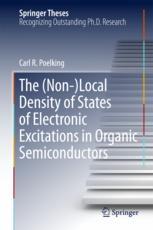

Most ebook files are in PDF format, so you can easily read them using various software such as Foxit Reader or directly on the Google Chrome browser.
Some ebook files are released by publishers in other formats such as .awz, .mobi, .epub, .fb2, etc. You may need to install specific software to read these formats on mobile/PC, such as Calibre.
Please read the tutorial at this link: https://ebookbell.com/faq
We offer FREE conversion to the popular formats you request; however, this may take some time. Therefore, right after payment, please email us, and we will try to provide the service as quickly as possible.
For some exceptional file formats or broken links (if any), please refrain from opening any disputes. Instead, email us first, and we will try to assist within a maximum of 6 hours.
EbookBell Team

0.0
0 reviewsThis book focuses on the microscopic understanding of the function of organic semiconductors. By tracing the link between their morphological structure and electronic properties across multiple scales, it represents an important advance in this direction.
Organic semiconductors are materials at the interface between hard and soft matter: they combine structural variability, processibility and mechanical flexibility with the ability to efficiently transport charge and energy. This unique set of properties makes them a promising class of materials for electronic devices, including organic solar cells and light-emitting diodes. Understanding their function at the microscopic scale – the goal of this work – is a prerequisite for the rational design and optimization of the underlying materials. Based on new multiscale simulation protocols, the book studies the complex interplay between molecular architecture, supramolecular organization and electronic structure in order to reveal why some materials perform well – and why others do not. In particular, by examining the long-range effects that interrelate microscopic states and mesoscopic structure in these materials, the book provides qualitative and quantitative insights into e.g. the charge-generation process, which also serve as a basis for new optimization strategies.